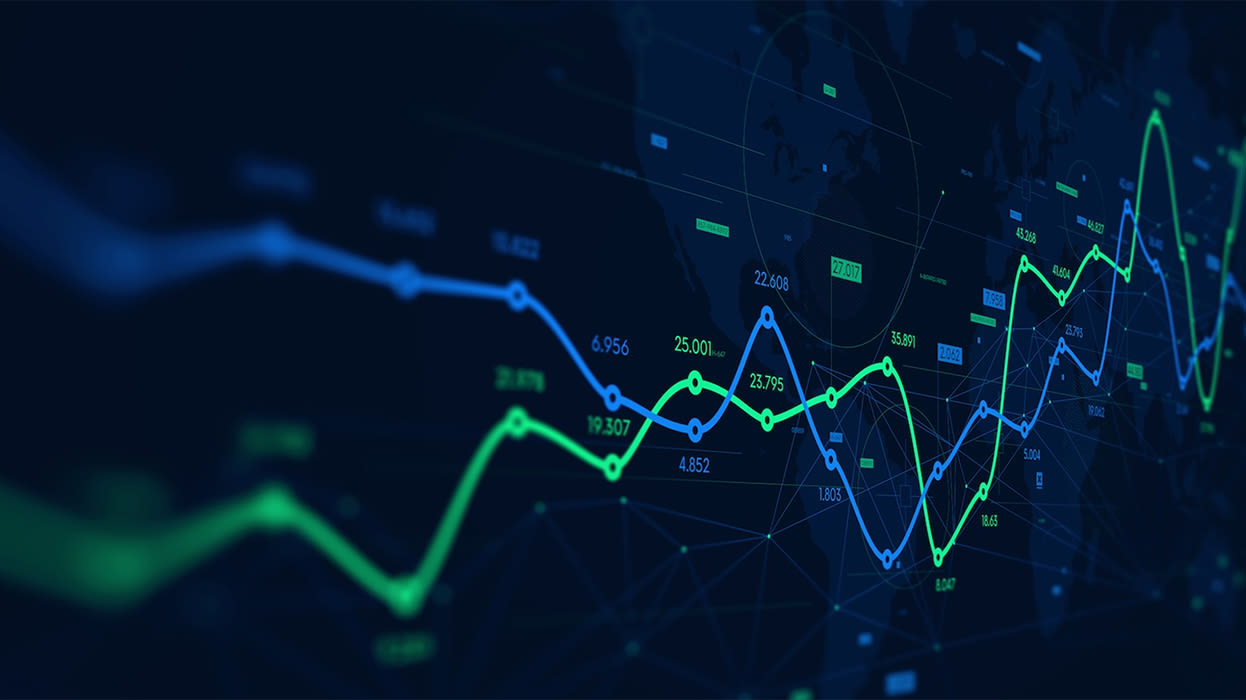
May 16, 2022
Alarm Bell Rings - Flexport Weekly Economic Report
Alarm Bell Rings - Flexport Weekly Economic Report

Flexport has been tracking and forecasting U.S. consumers’ heightened preference for goods over services throughout the pandemic. Our indicator was designed to signal when there were signs of consumer behavior returning to pre-Covid norms. That signal just went off.
In Focus - Post-Covid Indicator Suggests Changes are Coming

Anyone could see that the Covid-era economy was different from before. But how was it different in quantifiable terms? Could we tell if and when things were to revert back to normal?
With these questions in mind, we developed the optimistically-named “Post-Covid Indicator (PCI).” We focused on the way people in the U.S. spent their money. Specifically, the division between spending on goods and on services had been very stable for years. Then, right at the outset of the pandemic, there was a dramatic shift. The share of consumer spending on goods increased and the share spent on services decreased.
It wasn’t hard to see why that might be. Many services that people enjoyed pre-pandemic – travel, going to the gym, dining at restaurants – became unavailable under pandemic restrictions. Meanwhile, real personal incomes rose, boosted by government fiscal support. The upshot was sharply-elevated goods demand that global supply chains were hard-pressed to meet.
We set out to track this shift in consumption preferences with the PCI. We scaled it so zero would match the pre-Covid norms and 100 would match the elevated goods preference of the summer of 2020. Not only did we track it, we looked for patterns in Flexport data that would let us forecast what would happen next. The idea was to have an alarm bell that would sound if conditions started to return to their pre-pandemic norms.
That alarm bell just sounded, for the first time. In new PCI estimates released today, we find that consumer preferences for non-durable goods, adjusted for inflation, are likely to head back toward pre-Covid levels as we head into this summer.
There are a few reasons for caution with this forecast.
- First, as the preference for non-durable goods (those expected to last less than three years) goes down, the preference for durables looks steady.
- Second, this is a measure of goods preference, not of the overall demand for goods; you could see a similar result if non-durables consumption rose, but by less than services and durables.
- Finally, these findings are based on data through April, as many in the U.S. seemed inclined to put Covid practices behind them. To the extent the health situation were to worsen, that could push behavior back to Covid-era norms.
But if you were waiting for an early signal that U.S. consumer behavior might be shifting back, we just got one.
Latest Flexport Metrics & Research
The Flexport Ocean Timeliness Indicator for Transpacific Eastbound routes increased slightly to 104 days for cargo arriving in the week to May 15 from 103 days a week earlier. By contrast, Flexport’s Air Timeliness Indicator for TPEB remained unchanged at 11.4 days.
In other research we released a deep-dive into new U.S. sanctions against Russia which focus on capital equipment and the mining industry.
Economics Data
U.S. inflation measures showed upward price pressures continuing:
- The Consumer Price Index (CPI) for April was up 8.3% from a year before. Both the one-month change (0.3%) and the year-over-year change were smaller than in March. However, the story that this is a transitory phenomenon driven by a few key sectors became less plausible.
- The “core” CPI number, excluding volatile food and energy, saw a monthly rise of 0.6% in April vs. 0.3% in March; it was up at a 6.2% annual rate in April. The category “services less energy services” rose by 4.9%, with its shelter component up 5.1%. That broad services category accounts for 56.8% of the weight in the CPI.
- The Producer Price Index (PPI) rose at an 11.0% rate for the 12 months to April, with motor vehicles and equipment leading the way. Any story in which inflation is to quickly subside has to deal with the likely impact of rising input costs on the final costs to consumers.
- Import prices meanwhile increased by 12.0% year over year in April. That was slower than the 13.0% rate in March. While energy prices have taken a breather, explaining part of the slowdown, prices excluding food and fuels increased by 7.0% versus 7.1% a month earlier.
Consumer sentiment dropped sharply in April, according to a University of Michigan survey. It fell to its lowest level since 2013. Over a third of consumers attributed a negative assessment to inflation while longer-term inflation expectations had a median of 3.0%. The Fed’s hopes of bringing down inflation without too much economic pain depend critically on inflation expectations remaining anchored at a moderate level.
- A separate survey by the New York Federal Reserve found median inflation expectations for three years from now at 3.9%.
China’s industrial production fell by 2.9% year over year in April 2022, down from a 5% increase in March. Automotive and general equipment manufacturing both fell at a double digit rate while apparel, chemicals and food also fell.
- China’s merchandise trade activity increased by just 2.1% year over year in April, marking the slowest rate of growth on that basis since June 2020. Factory closures contributed to imports that were unchanged and exports that rose by just 3.9%. While representing a slowdown, activity was still 32.9% higher than April 2019.
- Producer prices in China rose by 8% in the year to April. That was down from the 8.3% figure in March, but above expectations.
U.K. GDP fell by 0.1% in March after no growth in February (a slight downward revision). A leading contributor was a 2.8% decline in wholesale and retail trade.
- U.K. international goods trade activity set a new record high in March after imports rose by 47.5% year over year and exports climbed 11.0%.
- Some care is needed with the import figures: imports are likely flattered by comparison to initial post-Brexit disruptions a year earlier; half the growth in imports in sterling terms is explained by higher energy imports, driven by rising gas prices.
German economic sentiment improved in May, according to the ZEW index. The Euro Zone version was up as well.
Politics & Regulations
President Biden has launched a wide-ranging plan to tackle price inflation. That may include cutting tariffs on imports from China and that the White House is “looking at what would have the most positive impact.”
- Total U.S. Treasury income from tariffs reached $9.16B in March, the highest on record. The average tariff rate of 3.11% for the month compares to an average of 1.5% in the 12 months before the Trump administration’s Section 301 duties on imports from China were first introduced.
- The administration’s Indo-Pacific Economic Framework may also soon be launched with partners Japan and South Korea. The initial details were already launched in February and will focus on enabling infrastructure for trade (including digital standards and labor issues) rather than a full trade deal like CPTPP or USMCA.
- Malaysia and the United States have also agreed to cooperate more closely on supplies of semiconductors, particularly with regards to transparency (data sharing) and investment.
The Northern Ireland Protocol covering customs arrangements between the U.K. and EU may prove “not sustainable in its current form” according to Prime Minister Johnson, raising the prospect the U.K. may withdraw from its terms. The EU has already stated it may retaliate, up to and including suspending the wide Trade & Cooperation Agreement.
- The British government’s legislative agenda for the coming year (aka the “Queen’s Speech”) includes nearly 40 bills including: trade deals with Australia and New Zealand; a move to full electronic international trade documentation; and wage controls for seafarers among others.
The World Trade Organization’s push towards an intellectual property waiver for COVID-19 vaccines continues to struggle due to the fine-print on which countries can receive a waiver. Further progress will follow domestic consultations by diplomats with an aim to compete negotiations by the “MC12” meeting on 12-15 June 2022.
Supply Chain Update
Ukraine has cut Russian gas supplies through one of the major pipeline routes. The Russian government also launched sanctions against a number of European companies which will effectively cut supplies via the Yamal pipeline from via Poland and Germany.
- The two actions have reportedly led to another increase in European natural gas prices with likely downstream impacts on the plastics, fertilizers and power generation industries.
- Continued flows also depend on European buyers’ willingness to accept Russia’s demands for payments in rubles. Press reports indicate at least 20 firms may be willing to do so.
- The European Union will reportedly announce a 200 billion euros investment program to reduce its dependence on Russian fossil fuels, including natural gas, by 2027.
Against the backdrop of conflict in Ukraine, The OPEC+ group has modestly increased its plan to increase production by 0.432 million barrels per day in June compared to recent monthly increases of 0.400 million barrels per day.
- The U.S. government is also planning to refill its Strategic Petroleum Reserve. The replacement of 60 million barrels of oil equivalent (mboe) will be carried out over “unspecified future years”. That follows the planned release of 180 mboe to offset higher gasoline prices.
The automotive industry is beset by rising material costs which have added to a semiconductor shortage and COVID related supplier closures, leading two of the Japanese automakers to identify cost increases of 1.5x to 2.0x in the 12 months to March 2023 versus March 2022.
Chart of the Week - Every Little Bit Helps

The U.S. has temporarily lifted Section 232 steel and aluminum duties on imports from Ukraine for 12 months. The tariffs were applied by the Trump administration at a rate of 25% on most steel products and 10% for aluminum. Iron and steel exports accounted for just over one-quarter of Ukraine’s exports in 2020. The U.S. accounted for 7% of Ukraine’s steel exports in 2020 (source UN Comtrade).
A surge in steel prices, in part due to the prospect of the conflict, had already pushed U.S. imports of steel and aluminum from Ukraine to $210 million in the 12 months to March 31, 2022.
That equated to 0.3% of U.S. imports versus a peak of 2.4% in 2008. The removal of tariffs, most recently experienced by suppliers from the EU and previously to Canada and Mexico as part of the USMCA trade deal, could boost imports as shown in the chart above.
Disclaimer: The contents of this report are made available for informational purposes only and should not be relied upon for any legal, business, or financial decisions. Flexport does not guarantee, represent, or warrant any of the contents of this report because they are based on our current beliefs, expectations, and assumptions, about which there can be no assurance due to various anticipated and unanticipated events that may occur. This report has been prepared to the best of our knowledge and research; however, the information presented herein may not reflect the most current regulatory or industry developments. Neither Flexport nor its advisors or affiliates shall be liable for any losses that arise in any way due to the reliance on the contents contained in this report.
About the Author




